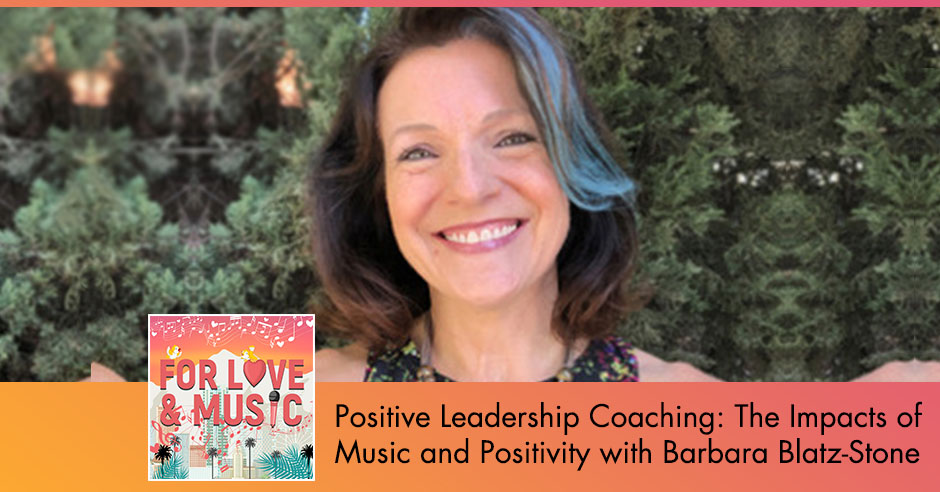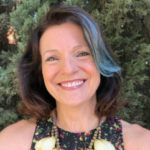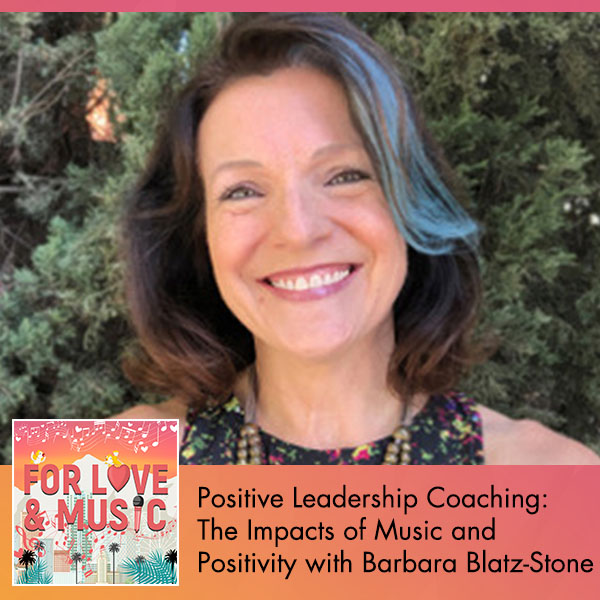
What does positive leadership mean and what does a positive leadership coach do? Here to answer these questions with host Tara Joseph is Barbara Stone, a leader development coach and positive organizational strategist. Barbara shows us how music and therapy can come together to unlock people’s potential, bringing in positivity to their lives. Explaining Dr. Jeremy Hunter’s “four circles,” she also offers some advice to on how highly-stressed people can let words pass by.
—
Listen to the podcast here:
Positive Leadership Coaching: The Impacts Of Music And Positivity with Barbara Blatz-Stone
Our guest is a positive leadership coach. What does that mean? Let’s find out and let’s also find out how being a positive leadership coach can possibly combine with music to make us all stronger, healthier, and see how we can unlock our full potential. Here is the one and only fabulous Barbara Stone. How are you?
I am well. How are you, Tara? It’s great to be on your show. I’m excited.
It’s an honor to have you. It’s also lovely to have you because I think we’re going to be discussing the way that music can potentially be used in a different way to the way that I often discuss music with the other guests that I’ve had on. I’m excited about this because it’s a little different. Let’s start at the beginning. You are a positive leadership coach. Can you explain to our readers what that means?
Let me put a little background on that too. I was in the fashion industry for many years. If any of our readers know that industry at all, it can be what we call a deficit-based industry where there’s a lot of negativity. There’s a lot of focus on weaknesses and on what we don’t have. I found that in that space for that many years, I wanted to find something in my life that spoke to my more positive sense of the world and the way we can reach our full potential. I went and got my Master’s in Positive Organizational Psychology. I focused more on leadership and I will say particularly women. A positive leadership coach is someone who develops leaders with a positive focus, focusing on their strengths rather than their weaknesses.
You’re looking at what’s right with you rather than what’s wrong with you. Rather than regular psychology that looks at what is wrong and how can we get to normal, whatever that is. What we’re looking at is what is normal or the status quo? How can we be extraordinary? How can we be our best selves? There’s a science to that. Positive psychology is the underpinning of that and has only been in existence for several years. I was fortunate enough at the university to study with one of the forefathers of positive psychology, Mihaly Csikszentmihalyi, who wrote all of the books and the research on flow. If that explains it, I hope that does explain it. I work with clients to specifically find those things that are challenges and flip them into focusing on how to brainstorm ideas on how to get past those challenges, things they haven’t seen before.
If you have a client who comes to you with a negative feeling or is experiencing something negative in the way that they’re trying to conduct their business, you basically turn the negativity into something positive.
In a sense, I would explore what those negative things are? What are those challenges? Sometimes it’s confidence. Sometimes it’s imposter syndrome. What resonates or what happens when you feel that way? What are those different specific feelings or challenges? We go through each one and brainstorm away to turn it around. If this happens then I can do something else. It’s exploring why. Why is this happening? Is it true? That’s another aspect. You’re saying, “I can’t do this and I’m having trouble doing this.” Have you done anything like that in the past? We look at different pieces of their work and we try to focus on what you’re good at. That’s why I bring in strengths and I bring the strengths assessment because you look at what they are good at. What is in their toolkit? How do they approach a situation? What have they done in the past? You start to build up a new habit of, “Maybe I can do that. Maybe I can approach it differently.” It’s working to leverage what you have in your toolkit but then also unlock other things that you don’t normally think of.
I have to say to the readers that you are without a shadow of doubt one of the most positive people I’ve ever met. You are always smiling. The sunshine is always out around Barbara Stone seriously. With your husband Julian as well, you’re both positive and happy. You look at it and you have this aura about you. Is that who you are and consequently, there was no other option than going into positive psychology because of the integral person that you fundamentally are?
I’m not going to lie, positive psychology also has that airy-fairy piece about it, like that Pollyanna piece of, “Everything’s great.” It’s not. I have my negative space and I have my times when I’m not positive. Overall, this speaks to strengths. When I did my strengths, my number one strength is positivity. I’ve done a lot of research on it. I’ve spoken with one of my professors and what I was studying. It’s like a superpower that needs to be protected. It’s something that if I want to leverage it properly, I can’t afford to let it be sapped, but I need to leverage it and use it at the right time. When I was young, I was much like that. I was positive. I went through a period of as you do in your teens, but then especially in my fashion career where you’re around that weakness focus where nothing is ever good enough and there’s not a lot of appreciation at where I was.
The fashion industry is notorious for getting people down and criticizing people. No one’s ever thin enough.
There is a science to how you feel, how you react to the world, and how you want to work in it. Click To TweetThey’re never good enough, the order is never big enough and production isn’t fast enough. It’s a constant barrage of that day-to-day and someone like me where I thrive and I’m at my best when I am positive. I’m connecting with people. I’m empowering them. I’m empowering myself. We’re working as a team and collaborating. When this is eroded after many years, it does have to walk at you. Finding this space, this science, and it was through my daughter who went to study positive psychology in Copenhagen, which we know the Scandinavian countries are definitely considered some of the happiest places on the globe. They do study it in-depth. For me to look at this and say, “There’s a science about how I feel, how I react to the world, and how I want to work in the world.” I wanted to explore it further and then exploring it through my Master’s and then building a coaching practice around it. I was at the Getty Leadership Institute and worked with leaders there too.
Do you feel that there is a synergy between music and therapy? How can the two come together to unlock people’s full potential?
I do. I know there are therapists out there. Therapy deals more with the past and how it relates to your feelings and emotions in the present. It’s unlocking that and then coaching is more visionary and has to do with the future. Coaching, that’s another thing I always like to throw out there. The coaching that I do is self-directed, meaning that it’s not me mentoring and telling you what to do. That’s where the unlocking piece comes from. It’s me asking you the questions that’s helps you see it through your own perspective and your own reality. If you see it through mine, that’s my perspective. That’s my reality. That explains that. When it comes to coaching and music, I’ve used it with a couple of clients, especially when we talk about work-life balance. I also coach at Caltech. That’s a pressure cooker for scientific research and it’s quite intense.
They find quite a lot of difficulty with that. I remember it was one particular client, we coached around a creative outlet. It’s that space of I have so much in my left brain of problem-solving and scientific work. I need to connect with the more emotional side and you could do that through creativity. This person happened to be musical. I encouraged him to create scheduling within his day-to-day research and work. Create schedules to unleash that but in a random way. He found that the randomness of creating music randomly was fantastic. It helped with decompression. It created space for him. It can be almost going back to your point, like a therapy.
Was there any particular type of music that worked for him?
I also have confidentiality. I don’t know because I can’t say that I ever heard it or anything and he spoke in general, but it was being able to create his own. I believe it was synthesized, but it was creating his own rhythms and his own and random. It’s without all those boundaries around it, parameters or constructions. It’s creating this open space.
Do you find that music for you personally helps you to explore your full potential?
I used to use it in various ways and I find that when I am in a creative space, but free creative space. There’s a difference for me especially when I was a designer and even when I’m trying to even create a different curriculum for my practice, a workshop, or something. If I’m trying to brainstorm ideas and I need space, then I can put on something with great lyrics, something that makes me feel bigger than myself. It creates expansion and that’s what ideas need. That’s perfect. If I’m on what I term in neuroscientifically level three thinking, which is that heavy creative focus where you think strategically, I can’t have any lyrics. I can’t have anything that I emotionally connect to. I will tell you what I use but I used to decompress and also with focus thinking. I use Tibetan singing bowls with nature sounds. That helps me bring it in and it’s a beautiful hum that I can zone and get inflow in that respect.
Forgive my ignorance, but have you been to a sound bath? I went to my first one and I found it a little tricky, but I loved the second one.
What was different about the second one?

The first one, I found the sound overwhelming. It was loud. I was overwhelmed even though oddly enough it made me fall asleep. After it, I felt in a strange place, whereas the second one I went to which was in a smaller room. It was by the sea, having the noise of the Tibetan singing bowls and the sea in the background created this whole amazing zone that I went to that was quite fabulous. Those two things combined helped also. The bowls weren’t quite loud. I know you’re supposed to have a lot of noise.
I think there’s a certain level that you resonate with. We have the same synergy here with that sound of the singing bowl but with a natural sound. I’ve listened to the sound of falling rain or the beach. I’ve spoken to Mihaly Csikszentmihalyi who wrote the books on flow about this. It is something that calms the mind but creates space. The other thing that does that is open-monitoring meditation where you are not saying something or you are focusing on your breath a little bit, but you’re letting thoughts in your mind pass through. You’re not engaging with them.
That’s something you have to learn to do, isn’t it? Let thoughts pass by.
It’s hard not to engage.
I’m always a highly-stressed, neurotic person. I find that letting words pass by becomes difficult. For other people out there who maybe like me, how would you advise that they let these words pass by? How do you do that? How do you help?
It is a practice. I also took an executive mindfulness class, which was the power of attention. Even though we’re being mindful, it’s where are you putting your attention. The professor that I worked with or studied with, Dr. Jeremy Hunter, he looks at things through four circles. I’m sure he wouldn’t mind me saying this, but in every moment, the first circle is what we’re mindful of. It’s the moment. It’s the first circle. The second circle is your choice of where you put your attention. The third circle is the actions that you perform based on your choice. The fourth circle is the results that you’ll get based on the choices that you made at the moment. At the end of the day, if you are not receiving and getting the results that you want, you need to go back and think about the choices that you’re making at the moment. That struck a chord with me because I thought, “I’m in much more control of everything than I think I am.” You think things happen to you. You have a choice whether you’re going to engage or not and it’s training yourself to either not engage with certain things or engage with others. It’s open monitoring meditation and Jeremy Hunter’s power of attention.
He has attention exercises where you’re basically going through a body scan, which is a form meditation, but he is more focused on where you put your attention. When you think about it in that way, it’s my choice as to where I’m putting my attention. You start to become more aware of when you’re meditating, you have those thoughts. It’s like I’m going to engage. It makes you stop and think, “I’m not going to engage,” or “I don’t need to,” and it’s the practice. If we’re going to get scientific, it becomes a new neural pathway. If your pathway is to engage with every thought and that pathway is like a Grand Canyon, it’s your default. It’s go with everything. It’s a way of looking at it like, “I’m going to try. I’m aware. I’m going to try to go this other way. I’m going not to engage or I’m only going to engage on a surface level.” You’re creating a new pathway. It’s a muscle, the more you practice it, the more it becomes a habit. That’s what you want is to create a new habit.
You said you worked with more women than men. Is that because you think women are more open to the practices that you’re able to bring to them or it’s a chance that you work with more women?
The funny thing is I know I sit and work with more women and overall, I would say over the expense of say the last few years working with, it’s probably been more women. If you looked at my clients this particular moment, I work with eight Caltech postdocs, they’re all men. I have five other women clients and I’ve had them on and off over time. I have previous women clients, but I suppose the reason I say that and maybe it’s because I have an affinity in that way because I’m also coaching from my experience. As much as they have education and training, you’re also coaching. I find that women also find it easy to approach me when they’re in that transitional stage too. Even undergraduates, even Millennials, no matter what the age but when you’re in that space of, “I’m not sure,” I’ve been through that and I can speak to it. Adding education and training, I feel like I have something valuable to offer and also a way of understanding it and knowing the pitfalls and the difficulties that you go through. You also know how difficult it is to be a leader as a woman.
It’s fascinating. I have to say it brings a whole new outlook on how to potentially get from A, B to C and do it in a much more positive, enlightening way. We all get lost in our trials and tribulations of each day. Some days where cups are half-full and some days they’re half-empty. It’s definitely training that muscle.
If you are not receiving the results that you want, go back and think about the choices that you're making at the moment. Click To TweetIt’s stretching it. I’m going to keep throwing in odd bits of neuroscience or whatever. I’m sure people have heard of this, but it is that neuroplasticity and what that is it’s stretching that muscle. People used to think that you get older, you can’t learn anymore. We can’t learn anything. It totally isn’t true and I’m living proof. I’ve gone and got my Master’s. I’m not going to lie, I was nervous at first. Can I go back to school? Can I go back to school with people who I could probably be their mom?
How was that experience?
That experience, for anyone who’s done it, is about to do it or thinking about it, this is the best piece of advice. Take your ego and everything you think you are, that identity, and tuck it away for a while. You need to be on a student-level with a growth mindset and I can learn. I can learn from everyone.
Were the younger students open and welcoming to you?
For me, yes. In a way, that could speak to the area of study I was embarking on, which was positive psychology. In my first presentation, I was doing statistics and research methods. We had to do a presentation for our lab. This was the first three weeks. We had just started. I’ve presented 300-piece lines. I’ve led teams in Asia, all of these different things. This made me nervous. It was an out-of-body experience. I remember about to present and there are only about fifteen people in there. One girl raised her hand and I thought, “Do you have a question? I didn’t even start.” I thought, “This is terrible.” Because of my experience, I’m waiting for everyone to attack me, waiting for, “What’s wrong with it? What am I not doing right?” She raised her hand and she said, “You look a little bit nervous. Don’t worry about it. We’re all here. We’ve got your back. I’m sure what you have to say is great.” It was contrary to everything I’ve ever experienced. It almost unnerved me, but then once I settled in, it took a minute to recalibrate. I settled in and I thought, “What a difference.”
I rose to the occasion because someone gave you some space, they gave you some confidence. It was such a different situation. They were welcoming and open. I’ve found that we created a good synergy, whatever projects we were on together because I had some experience. Some of them had never been in the workforce yet. I have that experience whether it’s negotiation, aligning the project to people’s objectives, that kind of thing. Once we applied it in the real live industry, I was like, “This is my area.” I’m going to be honest, on my first week, they assigned a project and they’re saying, “We’ll use a Google Doc.” I didn’t know what it was. That’s what I mean about to take your ego and throw it out because you can’t sit there like, “I know it all,” because you don’t. That’s the point. If you did, why did you bother even embarking on this? That was the biggest learning curve for me and didn’t stop trying. There were plenty of times when I’m writing a research paper or presenting at a conference. It was out of my comfort zone, but I’m all about life begins at the end of your comfort zone. I think I looked at that 27,000 times.
The subtitle for my show is called, “For Love and Music,” which as the readers probably know are the two reasons that I moved to LA. With that in mind, would you say with all of your positivity that love has ever helped you make an unexpected decision in your career?
I would say even at the start of my career. My husband and I met in my last semester of college. He was an exchange student and how fun music is playing. Everyone loves this story, but I was literally dancing on a couch. I wasn’t enjoying that music. He walked in as an exchange student friend of one of my roommates and we met. About a month, we started dating but he was only there for a couple of months and left. We weren’t going to write. It was going to be over. He wrote back to me when you wrote letters. We even sent cassettes. I’ve never been out of the country at the time. I hadn’t been all over the US and I was still out of college. I was working on Wall Street. I was an economics and finance major. I was in a management program on Wall Street.
I’ve been over to visit a couple of months after I started, I went again, and then I quit my job, much to my parents’ dismay. That broke their heart, but they were still supportive. Because I always had an affinity towards fashion, I’ve been making things since I was young. It was always a sidebar thing or a hobby. I had done an internship in New York and the designer said to me, “I don’t think you have what it takes.” I said, “I’ll take the bank job.” Here I was, I moved to London because I wanted to be with him. It took us a few years of back and forth and I’m not going to lie. I was almost deported at Heathrow at one point because I wasn’t supposed to have two work permits and I did. In the end, I ended up going into fashion too. I ended up working in fashion. I persuaded someone to hire me over there and here we are.
Is there a particular song for you and your lovely husband, Julian, that resonates romantically with you?

It was definitely our wedding song. It was Phil Collins’ You Can’t Hurry Love. I have other songs that I like personally but for us, that’s one of them.
If someone said, “What is a song that resonates romantically for you and Alyssa?” We’d have to stop and think for a minute. I’ve asked this question to many people and I’ve never asked it to myself. That’s shocking.
I know another song. You wouldn’t remember this. It’s A Kiss is Just a Kiss. Harry Nilsson did it and that was our song at the wedding. I think about things like Dexys Midnight Runners’ Come on Eileen. It’s a silly thing that we went to see Joe Jackson in New York. These are all the things that were going on. We went to see U2, The Stones, there are many things that we’ve done together over time. We share similar music taste and The Clash is his total favorite. I love them, but I wouldn’t say, “That’s my ultimate favorite,” but we definitely share that type of music.
What are your goals for the future? What can we expect to see with all of the amazing work that you’re doing with all of your new clients?
It’s to build, to impact people further than I already do within coaching and positive leadership. I’ve created a curriculum with a partner who is my college roommate from when I met Julian. She and I put a curriculum together for first-time managers, emerging leaders, and also undergraduates. We’re working together. That’s our goal to impact and positively unlock potential in many of those areas going forward. I never felt such or been in such a rewarding space that I am now. It feels completely different. It’s exponentially different from what I felt in my career in the fashion industry. This is much more. It’s on a deeper level. Maybe we get to a certain point or life and we want something like that. I coach people around that too because some people want meaning at a certain point. All of a sudden, the career is like, “What’s next? Is this it? What are my core values? How do I align my work and my life to that?” I feel that now my work aligns with my core values and it brings me joy.
If our readers would like to get in touch with you, how do they do that?
I’m going to be honest, many people say, “Do you have a website?” I’m working on it, but everything’s been by referral. I’ve never thrown a website out there. My LinkedIn profile and I go by Barbara Blatz-Stone. My LinkedIn profile has testimonials of what people have written about my work. That’s usually the best way to get in touch with me or my email.
You can always contact Barbara through me at LaLaLanded.com and I can forward any questions onto Barbara. Barbara, you have been a wonderful guest. I knew you would be, always full of the joys of spraying. Thank you for being such an amazing guest and insightful. We’ve all learned a lot and hopefully, we’ve got a lot more to learn from you and a lot more to hear from you. You’re welcome on the show anytime you fancy coming on.
You have great questions and inspiring.
Thank you to our readers and you will hear from myself and Dani on La La Landed soon. Thanks for checking in.
Important Links:
About Barbara Blatz-Stone
 After twenty manic years working around the globe as a creative in the fashion industry, Barbara Blatz-Stone took a career turn and redefined her professional path. Returning to school to get her MA in Positive Organizational Psychology at Claremont Graduate University, Barbara discovered her calling as a Positive Leadership Coach and Strategist, focusing on strengths and unlocking potential. Armed with educational knowledge from renowned experts on Flow, Positive Leadership, and Executive Mindfulness, all integrated with her wealth of professional experience, Barbara has built a diverse client list which includes museum, healthcare, and financial executives, post-doctoral students (Caltech), and entrepreneurial business owners. Synergizing mindfulness, creative Flow and neuroscientific principles into her coaching practice and workshop facilitation, Barbara’s work holistically targets performance, innovation, and work/life balance at both the individual and organizational level.
After twenty manic years working around the globe as a creative in the fashion industry, Barbara Blatz-Stone took a career turn and redefined her professional path. Returning to school to get her MA in Positive Organizational Psychology at Claremont Graduate University, Barbara discovered her calling as a Positive Leadership Coach and Strategist, focusing on strengths and unlocking potential. Armed with educational knowledge from renowned experts on Flow, Positive Leadership, and Executive Mindfulness, all integrated with her wealth of professional experience, Barbara has built a diverse client list which includes museum, healthcare, and financial executives, post-doctoral students (Caltech), and entrepreneurial business owners. Synergizing mindfulness, creative Flow and neuroscientific principles into her coaching practice and workshop facilitation, Barbara’s work holistically targets performance, innovation, and work/life balance at both the individual and organizational level.

